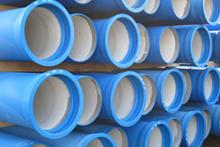
Fast, affordable Internet access for all.

As the article notes, while installers can lay fiber optic cables without using conduit, carrier-class conduits often use conduit for two primary reasons: (1) to protect fiber optic cables and (2) to make the cables easily accessible for future needs. The post explains the three methods installers user to feed the cables through the conduit. One method, the simplest of all, involves pushing the cables through conduit; it is commonly used for home and office installations. For longer routes, installers can potentially use either of more complex pulling and blowing methods. Dawson discusses the advantages and limitations of each method along with unique characteristics of short and long installations that dictate which method is the best for a given job.
For example, the most basic pushing method is practical for short runs inside of offices and homes because it can’t overcome snags and bends in conduit the way the pulling method can. On the other hand, while the pulling method is the most viable method for long outdoor installations, it is also more likely to cause damage to the cables during the install process. While installers can use the blowing method for longer routes in some circumstances, it requires installers to use a lighter than normal set of fiber cables, specialized conduit with a low-friction lining, and more care avoid physical obstructions in the conduit.
Both pulling fiber and blowing fiber take specialized equipment and require following specific techniques to do it right to get the fiber through the conduit both quickly and safely. If you watch a fiber installation team and they are just sitting somewhere along the road, chances are that they are not being idle but are instead pulling or blowing the fiber through the conduit. All of these methods require knowledge and skill to do right without harming the conduit.
West Des Moines, Iowa is making steady progress on a $60 million open access fiber-optic conduit system to expedite the delivery of affordable fiber citywide. And they’re doing it with the help of Google Fiber, which has slowly started to reverse course after the company’s 2016 decision to lay off hundreds of staff and freeze most meaningful expansion.
Plans for an open access fiber backbone in Erie County, New York (pop. 951,000) are being readjusted after having been stymied by the pandemic. The county will use Rescue Plan funding to cover the cost of building the backbone, which will be owned by the county and operated by ErieNet, a nonprofit local development corporation.
Join us live on Friday, September 16, at 1pm ET for the latest episode of the Connect This! Show.
In a release today, the Federal Communications Commission (FCC) announced it was voiding applications by two of the biggest Rural Digital Opportunity Fund (RDOF) bidders from December 2020. This includes more than $885 million for Low-Earth Orbit (LEO) provider Starlink and more than $1.3 billion for LTD Broadband, Inc.
